Reportage
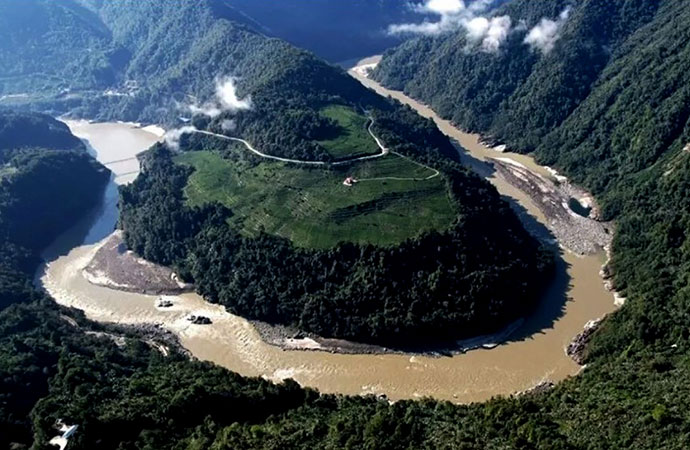
The Great Bend of the Yarlung Zangbo River in Medog, Tibet. Photo: Collected
China's sweeping hydropower ambitions on the Yarlung Zangbo-Brahmaputra River have thrust South Asia's water issues to a critical fray, approaching a potential grand impulse. Touting green prosperity, Premier Li Qiang cheer led the unveiling of the $167 billion hydropower goliath in Tibet last month.
Albeit what was never a silent flow, from the high plateau, through India and into Bangladesh, the waters now churn with apprehension, pushing environmental concerns to the back burner. The plan for the project came in ripples, but is now to lap at every regional shoreline for the coming decade.
What really is China's Medog?
For China's Lotus month, Beijing chose to ceremoniously break its silence on the biggest hydroproject of the century, known in the South as the Brahmaputra mega-dam project. The gargantuan is projected as the world's largest, with an expected turnout of an unprecedented 60 gigawatts annually, which is about three times the output of China's own Three Gorges.
Slated for completion by 2033, the project spans the Great Bend of the river in Medog County of annexed Tibet, where the river cascades dramatically before entering India as the Brahmaputra.
China frames the dam as a green flagship under its West to East Electricity Transfer Project, promising economic development for Tibet and progress towards carbon neutrality by 2060. The project is to support five hydropower stations strung by tunnels bore 20km through steep terrain of the Namcha Mountain.
However, its location on a major seismic fault has raised alarms regarding landslides and potentially fatal downstream flooding, escalating tensions around the brewing regional water crisis and leading some to dub it a more ominous 'water bomb'.
Dhaka's dilemma
In Bangladesh, the last stop on the 2,900 km river Brahmaputra feeds into the distributary Jamuna, supplying 70% of the dry season flow as well as half the fertile sediment influx for delta soils. Experts often advise against damming upstream due to sediment trapping, which could spell accelerated bank erosion and fatal loss of agricultural productivity, akin to that seen in the affected regions laden by the Farakka Barrage.
Enhanced coastal salinization, affecting Satkhira and the southwest of the country, is a potent cocktail that the World Bank projects to a median increase of 26% and 55% increase in the most affected areas in soil salinity by 2050. Though with hand on heart, Beijing insists the project is strictly "run of the river" with no ulterior intent. Dhaka still awaits an environmental impact assessment it first requested in March.
Bangladesh's options in the coming years, should primarily be to demand the data; or form a bilateral neutral notion after courting India to form a united downstream front; if and only if - whispering to Beijing for a bought meagre share of the gargantuan water machine bears no fruit.
Foreign policy juggling may not be a strong suit of the nation, but it is definitely easier than juggling water slipping through the fingers with hands tied.
New Delhi's bilateral headache
India faces a double bind: the Brahmaputra is a lifeline for over 130 million people in its northeastern states of Arunachal Pradesh and Assam. The flow supports critical agriculture and Indian officials express concern over the dam's potential to disrupt their downstream regimes as in recent times over 27 county villages led protests spearheaded by the Sinang Indigenous Farmers' Forum (SIFF). Their demands reflect human settlement priority as the dam's construction near a tectonic fault fuels fears of landslide triggered floods capable of scaled devastation.
India has not remained passive. The government is fast tracking countermeasures, notably the Siang Upper Multipurpose Project in the state, designed to buffer flow fluctuations and serve as a hydropolitical hedge.
Even as India warns China against unilateral river tinkering, tensions linger as India grapples with the optics of opposing China's unilateral project while simultaneously facing accusations from the Interim government for delays in the Teesta water agreement.
The long-stalled Teesta accord, which would split lean-season flows 42.5% to India, 37.5% to Bangladesh, remains hostage to state level politics in West Bengal. For Dhaka, calls for trilateral river stewardship ring hollow while Teesta runs dry, amidst shaky relations with the Indian government post 2024 regime change.
Enter Pakistan - stage downstream left
If the Brahmaputra saga is a slow-motion ripple, the Indus basin is white-water rafting. In April 2025, following the conspicuous terrorist attack in Indian administered Kashmir blamed on Pakistan based militants, PM Narendra Modi rushed to suspend the Indus Treaty. Modi's rallying cry: "Hindustan's water will flow for its own sole benefit" echoes in perpetuity as Islamabad promises a gift of full spectrum retaliation if flows are choked.
India's refusal to restore the treaty and plans to divert Indus waters internally, threaten to disrupt the lifeline for over 80% of Pakistan's agriculture output, escalating bilateral hostilities. Recently, Pakistan's army chief warned to "take half the world down" if any Indian dam endangered the Indus. A nuclear tinged bark that set off Geiger counters from Washington to Beijing.
As India leans on leverage against Pakistan, analysts have noted China quietly gaining bargaining chips in both basins. The eastern Himalayas are among the planet's most seismically restless zones.
The 1950 Assam-Tibet quake with a magnitude of 8.6 leveled villages hundreds of kilometers away. Piling a 300 billion kWh dam atop that fault line would surely deem mother nature to raise an eyebrow.
Rivers remember nothing of visas, borders, or press releases. Yet they now sit at the confluence of South Asia's energy ambitions, food security, and nuclear shadowboxing. Whether Beijing's concrete colossus becomes a fountain of cooperation or a flashpoint depends less on turbines than on the political currents swirling around them.








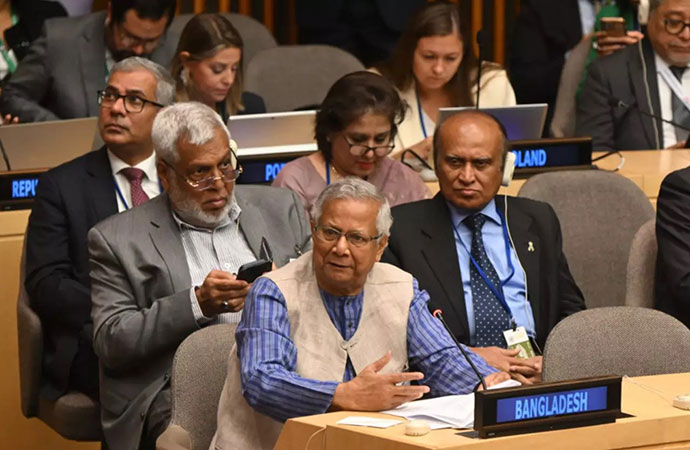

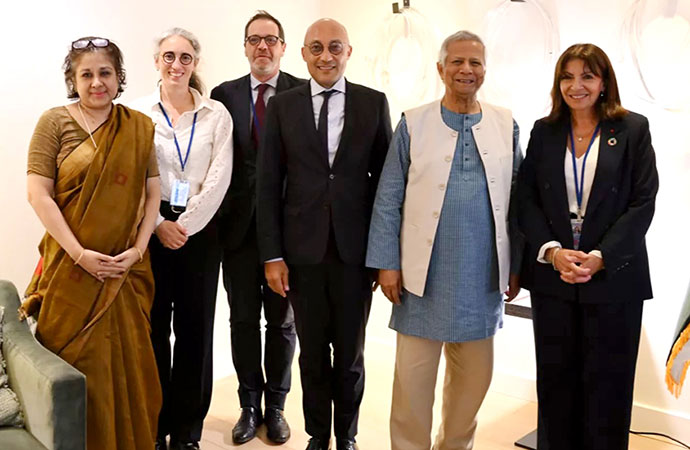




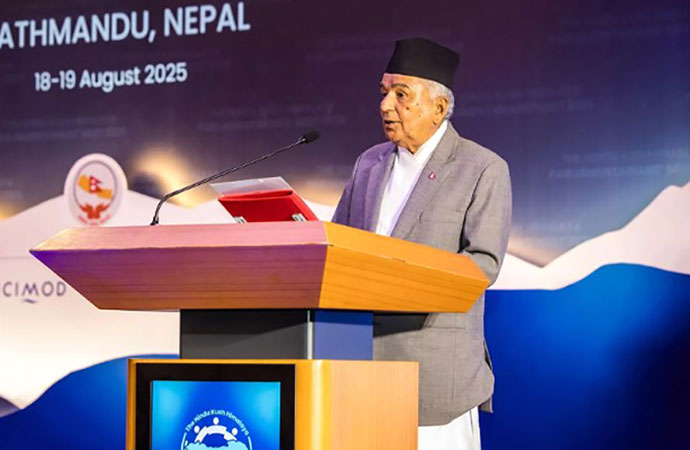


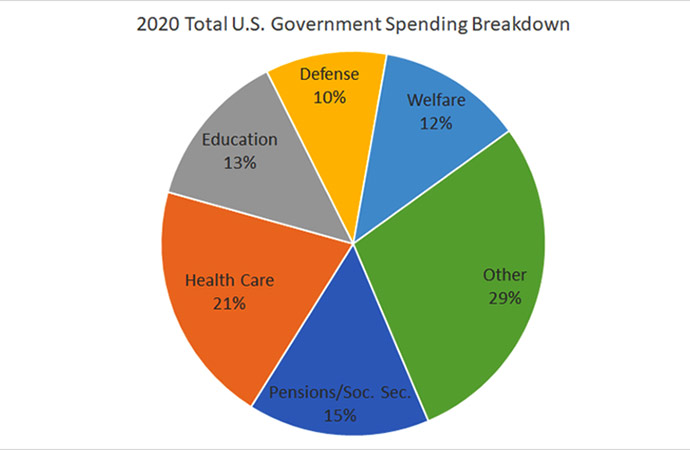


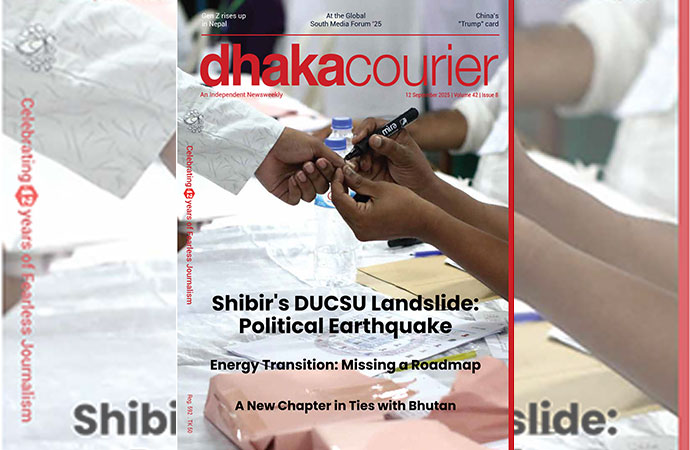



Leave a Comment
Recent Posts
Religion and Politics: A Toxic ...
At Dhaka University, cafeteria workers have been told not to wear shor ...
Enayetullah Khan joins AsiaNet ...
AsiaNet’s annual board meeting and forum was held in Singapore, ...
In a New York minute
Many leaders back a UN call to address challenges to ..
Defaulted loans at Non-Bank Financial Institutions ( ..
How the late Zubeen Garg embodied cultural affinitie ..